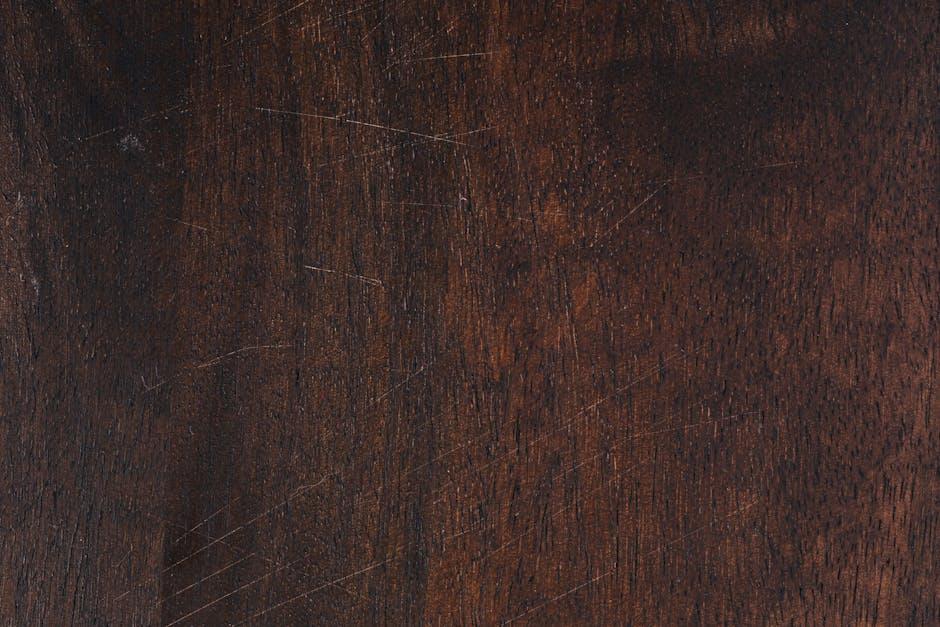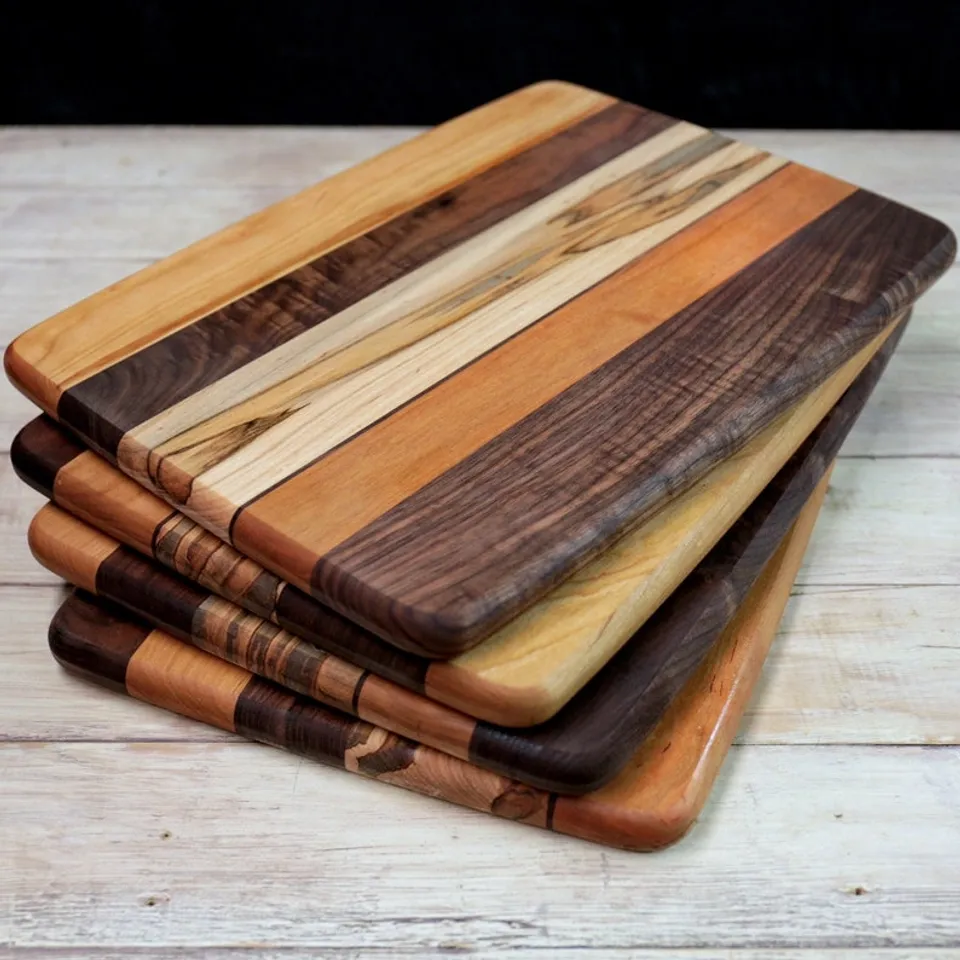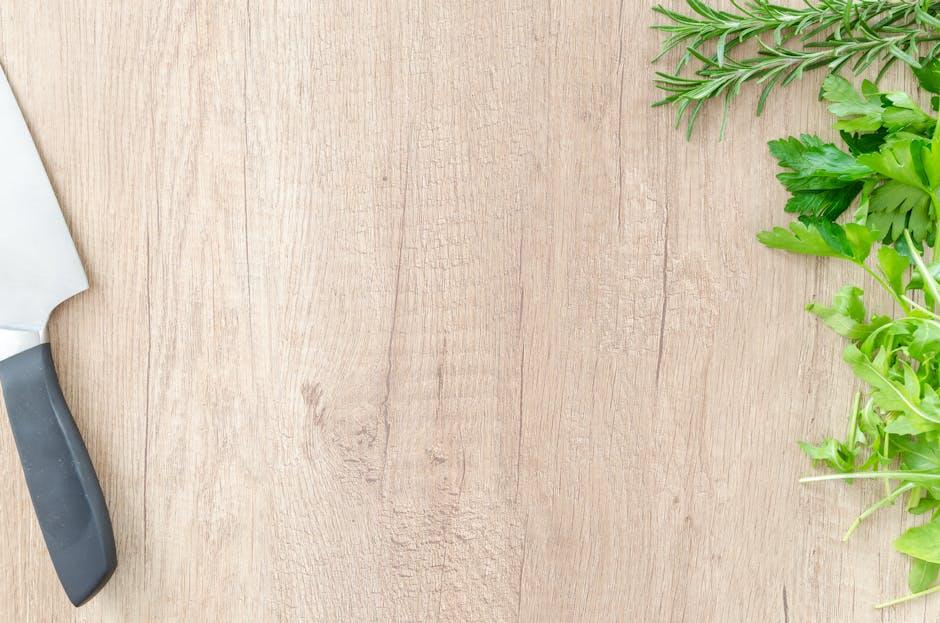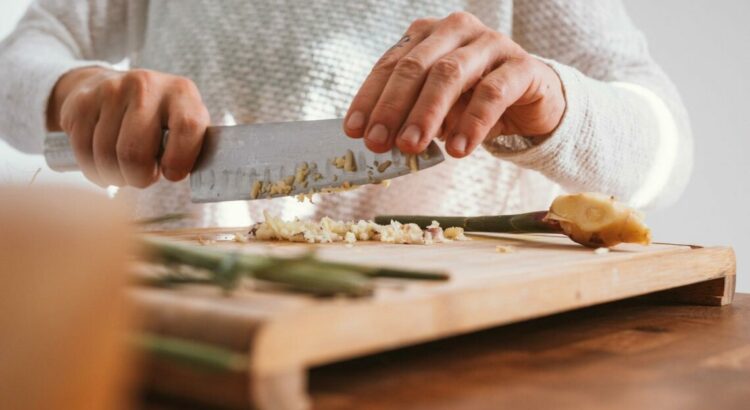Picture this: you’re in the middle of preparing a delicious meal, chopping up fresh veggies and marinating meat, when suddenly you realize that you’ve been using the same cutting board for everything. Cross-contamination has now become a very real and potentially dangerous concern. Fear not, though! In this article, we’ll explore the importance of cutting board care and how to avoid cross-contamination in your kitchen. So grab a cup of your favorite beverage and let’s dive into the world of cutting board hygiene!
Table of Contents
- Choose the Right Material for Your Cutting Board
- Adopt a Color-Coded System for Different Foods
- Embrace the Power of Proper Cleaning Techniques
- Get Serious About Sanitizing After Each Use
- Store Your Cutting Boards Smartly to Avoid Contamination
- Replace Worn-Out Cutting Boards Before They Become a Risk
- Implement a Pre-Use Check for Cracks and Grooves
- Master the Art of Dry and Store to Fend Off Bacteria
- Educate Everyone on Safe Food Handling Practices
- Invest in Cutting Board Maintenance Tools
- Questions & Answers for Cutting Board Care: Avoiding Cross-Contamination
- Concluding Remarks
Choose the Right Material for Your Cutting Board

When it comes to cutting board care and preventing cross-contamination in your kitchen, choosing the right material for your cutting board can make a big difference. Here are some popular options to consider:
- Wood: Wood cutting boards are a classic choice, and they have natural antimicrobial properties that can help prevent the growth of bacteria. However, they require more maintenance and are not dishwasher safe.
- Plastic: Plastic cutting boards are affordable, easy to clean, and dishwasher safe. They also come in a variety of colors to help you keep track of different types of foods. However, they can develop deep grooves over time, which can harbor bacteria.
- Bamboo: Bamboo cutting boards are eco-friendly and durable. They’re also less prone to developing grooves than wood or plastic boards. However, they can be more difficult to sanitize due to their porous nature.
- Glass: Glass cutting boards are non-porous and easy to clean, making them a hygienic choice. However, they can be hard on your knives and may dull the blades more quickly.
Consider your needs, preferences, and habits to determine which material is the best fit for you and your kitchen. Keep in mind that regular deep cleaning of your cutting boards, regardless of their material, is crucial to preventing cross-contamination and maintaining a hygienic food preparation area.
Adopt a Color-Coded System for Different Foods

When it comes to cutting board care and preventing cross-contamination in the kitchen, one of the most effective methods is to adopt a color-coded system for different types of foods. By assigning a specific color to each category of food, you can easily organize your cutting boards and reduce the risk of transferring harmful bacteria from one type of food to another.
Here are some simple steps to implement a color-coded system:
- Choose Your Colors: Select a set of food-grade cutting boards in different colors. For example, use red for raw meat, green for vegetables, blue for fish, and yellow for poultry.
- Label Each Board: Use permanent markers or labels to clearly indicate the designated food category for each cutting board. This will help you and your family members easily identify which board to use for which type of food.
- Stick to the System: Make a conscious effort to use the appropriate cutting board for each food item every time you prepare a meal. This will become a habit with regular practice.
- Regularly Deep Clean: As part of your kitchen deep cleaning routine, sanitize the cutting boards with a solution of bleach and water to kill any remaining bacteria.
By adopting a color-coded system for different foods, you can not only prevent cross-contamination but also make your kitchen more organized and efficient. It’s a simple yet effective way to protect your family from foodborne illnesses and maintain a clean and safe food preparation environment.
Embrace the Power of Proper Cleaning Techniques
Proper cutting board care is essential for preventing cross-contamination in the kitchen. Cross-contamination occurs when bacteria from raw meat, poultry, or seafood transfer to other foods, causing foodborne illnesses. By embracing the power of proper cleaning techniques, you can ensure a safe and hygienic cooking environment in your home.
To maintain cutting board care and prevent cross-contamination, follow these simple steps:
- Separate Cutting Boards: Use separate cutting boards for raw meat, poultry, seafood, and produce to avoid cross-contamination. This simple practice can prevent harmful bacteria from spreading to ready-to-eat foods.
- Regular Cleaning: After each use, wash cutting boards with hot, soapy water and a scrub brush to remove any food particles and bacteria. Be sure to focus on the grooves and crevices where bacteria can hide.
- Sanitizing: To further eliminate bacteria, it’s important to properly sanitize cutting boards. You can do this by applying a solution of 1 tablespoon of unscented bleach to 1 gallon of water and letting it sit on the board for a few minutes before rinsing thoroughly.
- Deep Cleaning: Periodically, it’s important to deep clean your cutting boards by using a paste of baking soda and water to scrub away stains, odors, and bacteria.
Following these cutting board care tips will not only help prevent cross-contamination but also ensure the longevity of your cutting boards. By embracing proper cleaning techniques, you can maintain a safe and healthy kitchen environment for you and your family.
Remember, practicing kitchen deep cleaning and proper cutting board care is the key to preventing cross-contamination, protecting your loved ones from foodborne illnesses, and enjoying peace of mind in the kitchen. Keep these tips in mind as you go about your daily cooking routines, and you’ll be well on your way to creating a safe and hygienic cooking environment.
Get Serious About Sanitizing After Each Use
After each use, it’s crucial to get serious about sanitizing your cutting board to prevent cross-contamination in your kitchen. Whether you use a wooden, plastic, or bamboo cutting board, proper care is essential to keep your kitchen safe and your food delicious.
Step 1: Wash with Hot, Soapy Water
- Rinse your cutting board with hot, soapy water immediately after use to remove any food residue and bacteria.
- Use a scrub brush to ensure all surfaces are thoroughly cleaned.
- Avoid submerging wooden cutting boards in water, as this can cause warping and damage.
Step 2: Sanitize with a Disinfectant
- After washing, disinfect your cutting board with a solution of 1 tablespoon of bleach per gallon of water.
- Alternatively, use a food-safe disinfectant spray to kill any remaining bacteria.
Step 3: Dry Properly
- Dry your cutting board with a clean towel to remove any excess water.
- Ensure your cutting board is thoroughly dry before storing to prevent mold and bacteria growth.
Step 4: Kitchen Deep Cleaning
- While caring for your cutting board, take the opportunity to deep clean your kitchen surfaces, utensils, and appliances.
- Use a disinfectant cleaner to sanitize countertops, sinks, and cabinet handles to prevent the spread of germs.
By following these steps for cutting board care and preventing cross-contamination, you can ensure a clean and safe kitchen environment for you and your family. Remember, a little extra effort in sanitizing after each use can go a long way in maintaining a healthy kitchen.
Store Your Cutting Boards Smartly to Avoid Contamination

When it comes to cutting board care, preventing cross-contamination is crucial for the health and safety of you and your family. Properly storing your cutting boards is an essential part of this process.
Here are some smart tips to help you store your cutting boards in a way that minimizes the risk of contamination:
Use a designated storage area: Create a specific space in your kitchen for storing cutting boards. This will help prevent them from coming into contact with other items that could transfer bacteria.
Invest in a cutting board rack: A cutting board rack is a convenient way to keep your cutting boards organized and separate from each other. It allows air to circulate around the boards, helping them dry properly after cleaning.
Consider hanging your cutting boards: If you have limited counter or cupboard space, consider installing hooks or a rack on the wall to hang your cutting boards. This not only saves space but also allows the boards to air out and dry thoroughly.
Store them vertically: Storing cutting boards vertically, rather than stacking them on top of each other, helps to prevent moisture from getting trapped between them. This minimizes the risk of mold and bacteria growth.
By following these smart storage tips, you can ensure that your cutting boards stay clean and safe to use. Remember, proper cutting board care is an essential part of maintaining a healthy and hygienic kitchen. Don’t forget to incorporate these storage practices into your regular kitchen deep cleaning routine to stay on top of preventing cross-contamination.
Recommended cutting board rack: Cutlery and More’s cutting board racks are stylish and functional, providing a great solution for organizing and storing your cutting boards.
Replace Worn-Out Cutting Boards Before They Become a Risk

Cutting boards are an essential tool in the kitchen, but over time they can become worn-out and prone to harboring harmful bacteria. To prevent cross-contamination and ensure the safety of your food, it’s important to regularly assess the condition of your cutting boards and replace them when necessary.
Signs that your cutting board may be worn-out and in need of replacement:
- Deep grooves and scratches that are difficult to clean
- Discoloration or staining that does not come off with cleaning
- Warping or cracking that could harbor bacteria
- Lingering odors even after thorough cleaning
When it comes to cutting board care, preventing cross-contamination is key. Worn-out cutting boards can become a breeding ground for bacteria, putting you at risk of foodborne illnesses. To avoid this, make sure to regularly inspect your cutting boards and promptly replace any that show signs of wear.
Recommendation: Sanitary Cutting Board Set
To maintain a hygienic kitchen environment and prevent cross-contamination, consider investing in a set of color-coded cutting boards. These sets often come with boards designated for specific food groups, such as meat, vegetables, and seafood, making it easy to avoid cross-contamination. Look for cutting boards made of high-quality, non-porous materials that are dishwasher safe for easy cleaning and sanitizing.
When it’s time to replace your worn-out cutting boards, don’t hesitate to make the switch. By prioritizing cutting board care and preventing cross-contamination, you’ll not only ensure the safety of your food but also create a healthier environment for you and your family. And remember, regular kitchen deep cleaning is also essential to maintain a hygienic and safe cooking space.
Implement a Pre-Use Check for Cracks and Grooves

When it comes to cutting board care and preventing cross-contamination in the kitchen, one crucial step is to regularly check your cutting board for cracks and grooves before each use. These imperfections can harbor harmful bacteria, increasing the risk of foodborne illness. To effectively , follow these simple steps:
Inspect the Surface: Before using your cutting board, carefully examine the surface for any visible cracks, grooves, or deep scratches. Use your fingers to feel for any rough or uneven areas that could indicate damage.
Sanitizing Solution: If you notice any cracks or grooves, sanitize the cutting board by washing it with hot, soapy water. Then, use a sanitizing solution of one tablespoon of unscented bleach to one gallon of water to disinfect the board. Allow it to air dry completely before using it again.
Conditioning the Board: If your cutting board is made of wood, regularly condition it with food-grade mineral oil to keep it moisturized and prevent cracks and warping.
Consider Replacing: If your cutting board has deep cracks or grooves that cannot be effectively cleaned and sanitized, it may be time to replace it with a new one to ensure food safety.
By implementing a pre-use check for cracks and grooves, you can ensure that your cutting board is safe to use and help prevent cross-contamination in your kitchen. Incorporate this step into your routine kitchen deep cleaning to maintain a healthy and hygienic food preparation environment. Remember, a little extra care goes a long way in keeping your cutting board in top condition and your meals safe for consumption.
Master the Art of Dry and Store to Fend Off Bacteria
When it comes to cutting board care and preventing cross-contamination in your kitchen, proper cleaning and storage techniques are crucial. Here’s a guide to mastering the art of drying and storing your cutting boards to fend off bacteria and keep your kitchen safe and healthy.
How to Dry Your Cutting Board
To effectively prevent bacteria growth, it’s important to thoroughly dry your cutting board after each use. Follow these steps for proper drying:
- After washing your cutting board with hot, soapy water, use a clean and dry cloth to wipe off excess moisture.
- Allow the cutting board to air dry in a well-ventilated area, ensuring that both sides are completely dry before storing.
Properly drying your cutting board will help prevent water from pooling on the surface and creating a breeding ground for bacteria.
Storing Your Cutting Board
Storing your cutting board properly is essential for preventing cross-contamination and maintaining a hygienic kitchen environment. Here are some tips for storing your cutting board:
- Store your cutting board in a clean and dry location, away from moisture and heat sources.
- If possible, store your cutting board upright to allow for better air circulation and prevent moisture buildup.
- Consider using a dedicated cutting board rack or stand to keep your cutting board organized and easily accessible.
Proper storage will help prolong the life of your cutting board and ensure that it remains free from harmful bacteria.
By mastering the art of drying and storing your cutting board, you can effectively fend off bacteria and prevent cross-contamination in your kitchen. Following these simple yet essential steps will help keep your kitchen clean, safe, and healthy for you and your family.
Educate Everyone on Safe Food Handling Practices
Cutting boards are a staple in every kitchen, but they can also be a hotbed for cross-contamination if not properly cared for. By following a few simple steps, you can ensure that your cutting boards are clean and safe to use for all your food prep needs.
When it comes to cutting board care, the first step is to choose the right material. Plastic and wooden cutting boards are the most common options, and each has its own pros and cons. Plastic cutting boards are easy to clean and can be put in the dishwasher, but they are more prone to harboring bacteria. Wooden cutting boards are naturally antimicrobial, but they require more maintenance and are not dishwasher safe.
No matter what material you choose, it’s important to clean your cutting board after each use. Use hot, soapy water and a scrub brush to thoroughly clean the surface, and then rinse it well. For an extra layer of protection, you can also sanitize your cutting board with a mixture of water and white vinegar or a bleach solution.
In addition to regular cleaning, it’s important to periodically deep clean your cutting boards to prevent cross-contamination. For plastic cutting boards, you can run them through the dishwasher on a hot cycle. Wooden cutting boards can be deep cleaned by sprinkling them with coarse salt and scrubbing with a lemon, then rinsing with hot water. By following these simple steps, you can ensure that your cutting boards are clean, safe, and ready to use for all your food prep needs.
Invest in Cutting Board Maintenance Tools

Cutting board care and maintenance is crucial for preventing cross-contamination and ensuring the safety of your food. By investing in the right tools, you can prolong the life of your cutting boards and keep them in top condition.
Here are some essential tools to consider for cutting board maintenance:
- Cutting Board Oil: This oil helps to condition wooden cutting boards, preventing them from drying out and splitting. It also creates a protective barrier against moisture and food particles.
- Cutting Board Cleaner: A specialized cleaner designed for cutting boards can help remove stains, odors, and bacteria, keeping your boards clean and safe for food preparation.
- Cutting Board Scraper: A scraper can be used to remove any stubborn food particles or residue from the surface of the cutting board, ensuring a thorough clean.
- Cutting Board Brush: A brush with sturdy bristles can help to scrub and clean the surface of the cutting board, reaching into crevices and corners.
When it comes to preventing cross-contamination, regular cleaning and maintenance of your cutting boards are essential. Proper care not only extends the life of your cutting boards but also ensures that harmful bacteria and food particles are effectively removed, reducing the risk of foodborne illness.
Investing in cutting board maintenance tools is a proactive step towards maintaining a clean and hygienic kitchen environment. By regularly cleaning and oiling your cutting boards, you can prevent them from becoming breeding grounds for bacteria and ensure the safety of your food.
Questions & Answers for Cutting Board Care: Avoiding Cross-Contamination
How often should I clean my cutting board?
It’s best to clean your cutting board after each use to prevent cross-contamination.
Can I put my wooden cutting board in the dishwasher?
No, wooden cutting boards should be hand washed with warm soapy water and dried immediately to prevent warping.
Is it okay to use the same cutting board for meat and produce?
It’s not recommended to use the same cutting board for meat and produce to avoid cross-contamination.
How can I remove stains and odors from my cutting board?
Try scrubbing the surface with a mixture of lemon juice and coarse salt, then rinsing and drying thoroughly.
What is the best way to sanitize a cutting board?
You can sanitize your cutting board by spraying it with a mixture of water and white vinegar, then letting it air dry.
Can I use bleach to clean my cutting board?
It’s not recommended to use bleach on a cutting board as it can be harmful if residue is left behind.
How should I store my cutting board?
Store your cutting board in a dry, well-ventilated area to prevent moisture buildup and warping.
What type of cutting board is best for avoiding cross-contamination?
A color-coded cutting board set, with different colors for meat, produce, and ready-to-eat foods, is the best for avoiding cross-contamination.
What should I do if my cutting board starts to crack?
If your cutting board develops cracks, it’s time to replace it to prevent bacteria from accumulating in the crevices.
Can I use mineral oil to maintain my wooden cutting board?
Yes, regular application of food-grade mineral oil can help maintain the longevity of your wooden cutting board.
Concluding Remarks
So next time you reach for your cutting board, take a moment to think about its care and the potential for cross-contamination. By following these simple tips and techniques, you can ensure that your cutting board remains safe and sanitary for all your food preparation needs. Remember, a little care goes a long way in the kitchen.
